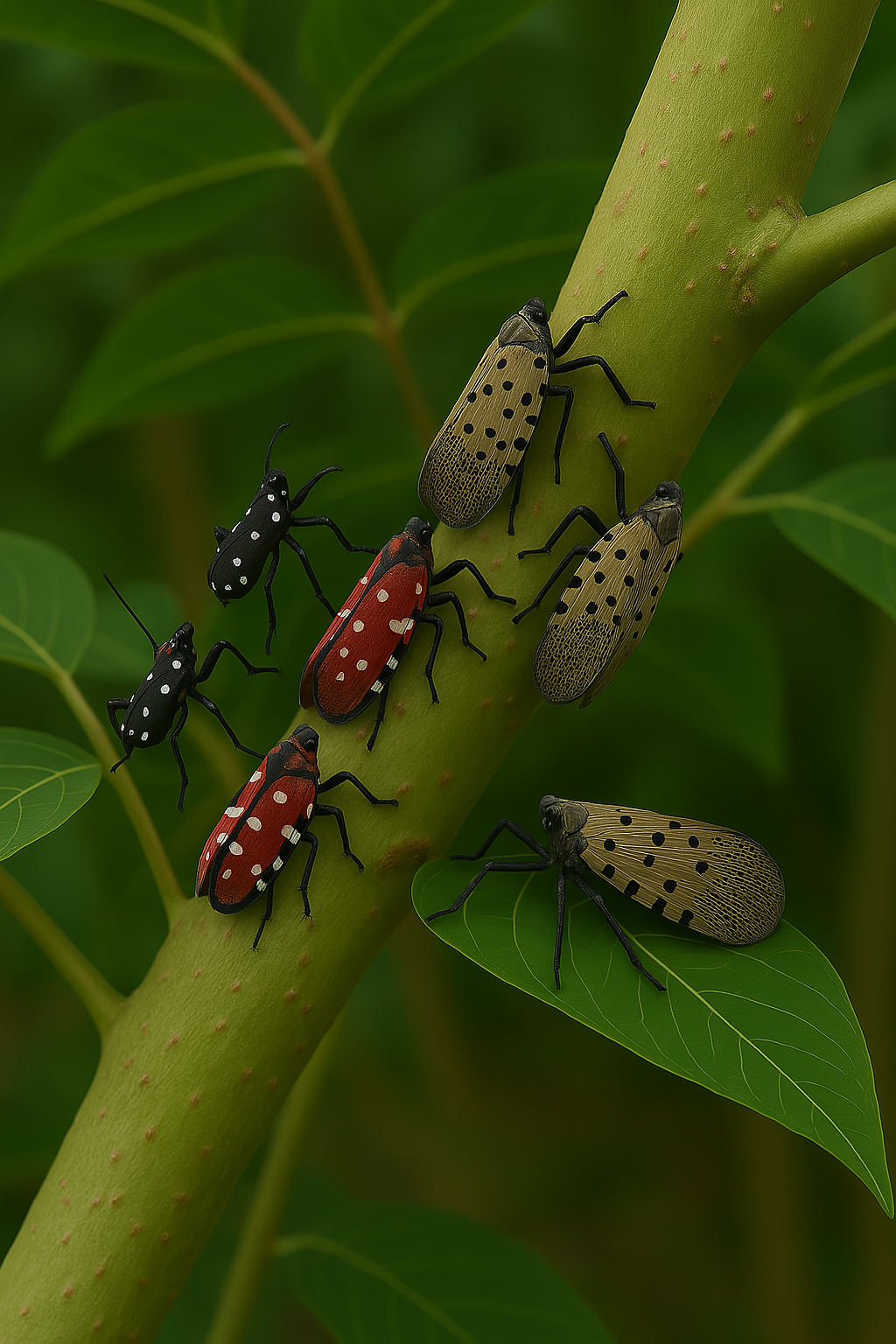Spotted Lanternfly Alert: Early Detection & Targeted Control If you’re spotting small black insects with white dots or bright red nymphs with white spots in your yard, you’re seeing early-stage spotted lanternfly nymphs—wingless instars that feed heavily on plant sap long before adults emerge. Early detection plus focused chemical treatment can protect your landscape and prevent population explosions.
Recognizing Spotted Lanternfly Instar Stages
Instar Stage Appearance Timing:
- 1st & 2nd Jet-black body with distinct white spots May–June
- 3rd Larger black nymph, still with white spots June–July
- 4th Bright red abdomen with white spots & stripes July–August
- Adult Gray-mottled forewings and red hindwings September+
For detailed photos and management tips, see the
Penn State Extension Guide.
CBPC’s Focused Chemical Treatment Plan
Cleveland Best Pest Control, LLC uses only EPA-registered products that are specifically labeled for spotted lanternfly control—ensuring both effectiveness and full regulatory compliance.
- Bark Spray Applications with Talstar P or Masterline
• Active ingredient: bifenthrin 7.9%
• Direct contact application to tree trunks and major limbs
• Targets nymphs and adults on surfaces where they congregate
• Applied strategically for optimal impact and safety
Why It Matters: While other ingredients like dinotefuran and imidacloprid have shown promise in research, they are
not labeled for spotted lanternfly treatment. CBPC strictly adheres to pesticide labeling, protecting your property and the environment while staying compliant with state and federal laws.
Pollinator Protection Measures
- We never treat blooming plants or trees
- Treatments are scheduled during pollinator inactivity (early morning or late evening)
- Drift-reduction nozzles and shielded spray gear protect surrounding habitats
Flight Facts & Harmless Behavior
Spotted lanternflies are planthoppers—more closely related to leafhoppers and cicadas than grasshoppers. While adults can glide, most movement is by hopping or short bursts of flight. And don’t worry: these bugs
do not bite or sting humans or pets. Their straw-like mouthparts are strictly for feeding on plants.
Cleveland’s Community Response to Lanternflies
Cleveland is taking bold steps to fight back—and CBPC is proud to reinforce these efforts.
Canine Patrols in Cleveland Metroparks
Dogs trained through a Virginia Tech program are helping sniff out lanternfly egg masses in Cleveland Metroparks. Four-legged team members like Bronco the corgi and Argent the German Shepherd have helped remove over
3,500 egg masses, preventing more than
175,000 lanternflies from hatching.
Public Education & Events
Engagement campaigns like
The Big Squish empower Clevelanders to “squish it when you see it.” Park staff host community events, teach identification tips, and feature meet-and-greets with the canine teams.
Quarantine Enforcement
The Ohio Department of Agriculture has quarantined 18 counties—including
Cuyahoga—to slow the spread. Residents are advised to check firewood, landscaping materials, and vehicles before travel. Businesses moving regulated materials must comply with inspection protocols. (References:
Penn State Extension Guide •
Ohio Dept of Agriculture •
Cleveland Metroparks)
Monitoring & Follow-Up
- Site visits from May through August to assess population levels
- Targeted reapplications when needed
- Final fall inspection to remove egg masses and prepare for next season
Ready to Take Action? Book Your Assessment with CBPC
Professional site assessments are
$75 plus tax. If you move forward with our treatment plan, this fee will be
credited toward your service. 👉 Schedule today:
https://www.cbpc.us/online-booking 📞 Or call:
216-250-1331 Let Cleveland Best Pest Control, LLC (CBPC) protect your landscape—before lanternflies take over.
